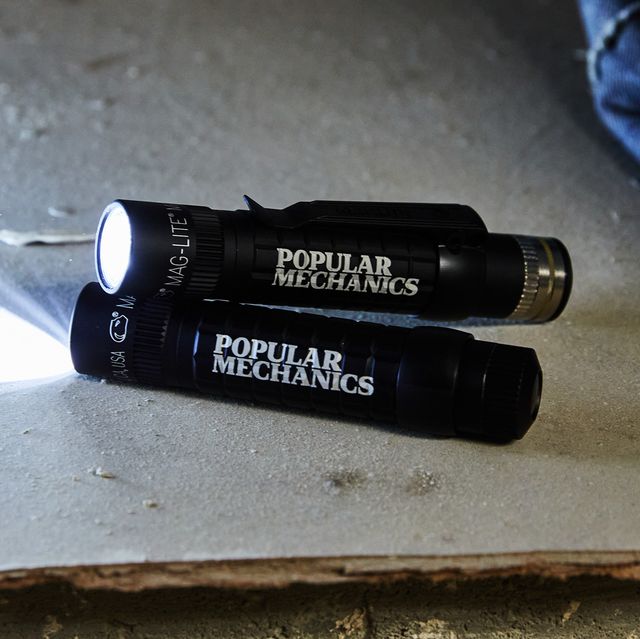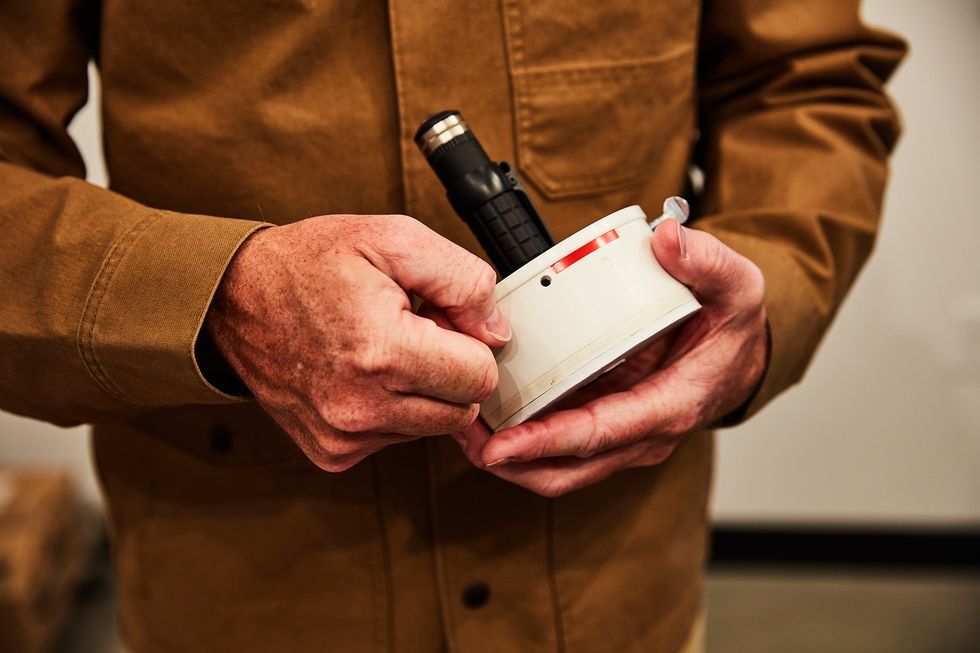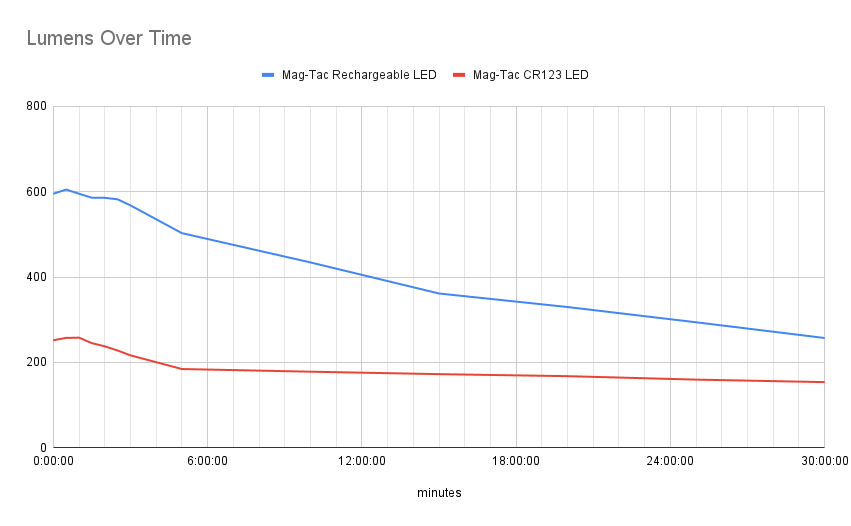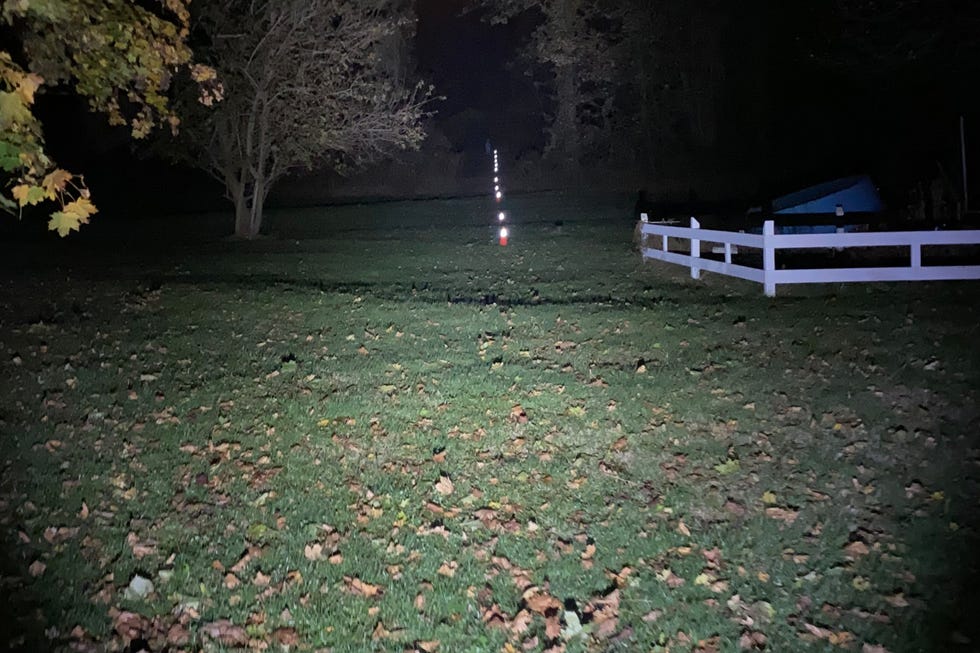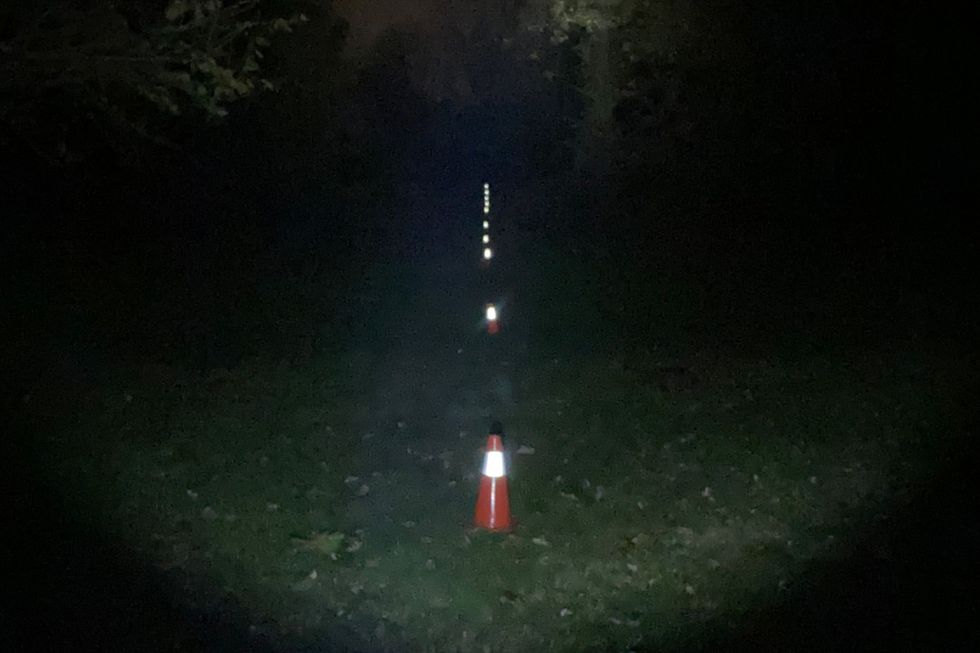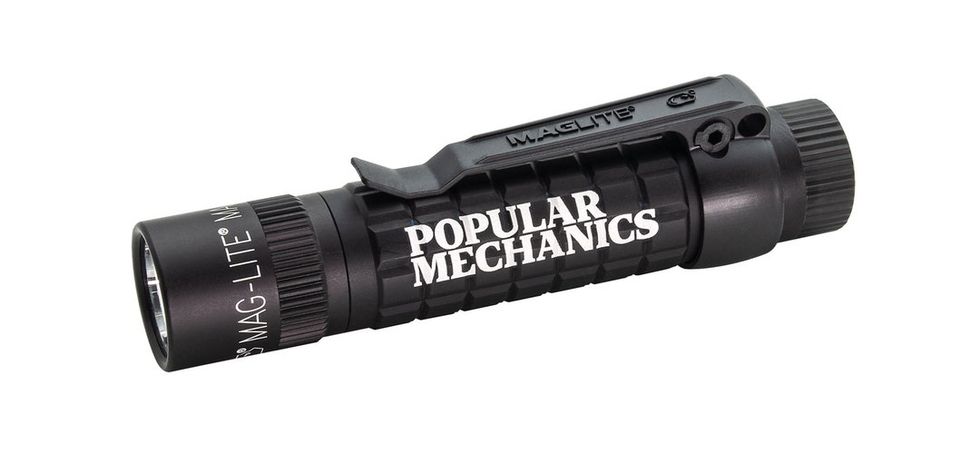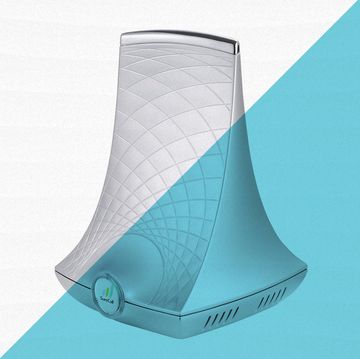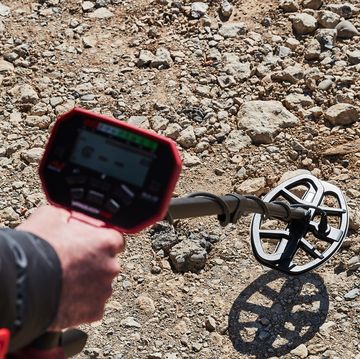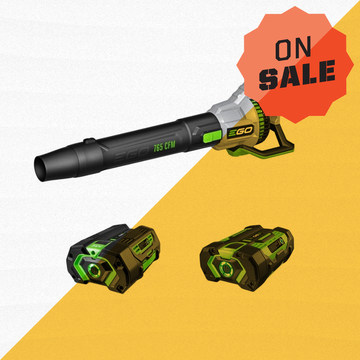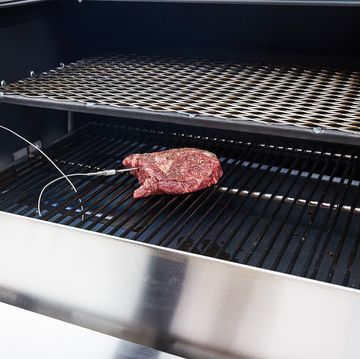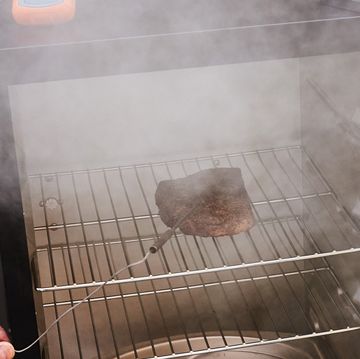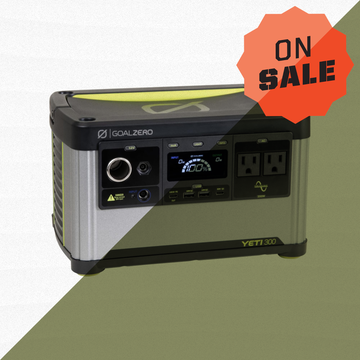The Takeaway: Maglite’s Mag-Tac LED Rechargeable and Mag-Tac LED CR123 tactical flashlights share some features, including impact- and water-resistance, body diameter, and grip, as well as a ten-year warranty. But they’re powered by different batteries and LED elements, which offer their own advantages and performance. We like these lights so much, we partnered with Maglite on these limited-edition, Popular Mechanics-approved and co-branded flashlights.
Mag-Tac LED Rechargeable and Mag-Tac LED CR123 tactical flashlight features:
- Made from durable anodized aluminum alloy components
- Quick select tail cap switch
- Drop-resistant from 1 meter
- Water-resistant rating of IPX4
Buy Now: Mag-Tac LED Rechargeable $85
Buy Now: Mag-Tac LED CR123 $50
Mag Instrument (the maker of Maglites) got its start machining precision parts for the military and aerospace industries. And in the 40 years Maglite flashlights have been around, they’ve developed a reputation for durability and performance. As we’d expect, those are exemplified in the design and construction of the Mag-Tac LED Rechargeable and Mag-Tac LED CR123 tactical flashlights. We’re impressed enough to partner with Maglite on a version with our name on it.
To really get a good idea for how these models perform, we tested run time, beam distance, and water and impact resistance. We used our integrated sphere in the Popular Mechanics shop to test total lumen output and spent a couple of moonless nights testing at a rural 10-acre property to see how test data translates to real-world situations.
How We Test
Both Mag-Tac LED models list ANSI FL1 standards on their packaging, and while these serve as reference points for comparing flashlights, they don’t do a great job of communicating real-world performance. For example, FL1 defines beam distance as how far a flashlight projects .25 lux—about the amount of light projected by the full moon. For the standard, this distance is not measured, it’s calculated by measuring the peak beam intensity, dividing by .25, and then taking the square root of the result. Yeah, it’s some math that can be difficult to put in perspective. So, the FL1 beam distance figures can be handy for comparing the potential distance of beams between flashlight models, but doesn’t necessarily tell you how far the lights will shine with outside, with real world variables.
While we log total lumens with the integrated sphere that traps and measures light output, we also determine exactly how far the flashlight helps you see things at night. To do this, we mark out set distances with reflective cones on a moonless night, in a location away from other light sources. We move a neutral grey human silhouette between the cones to determine the distance its shape is identifiable with each flashlight.
We test run-time, impact resistance, and water resistance in the shop. Run-time we gauge by clocking the time it takes the flashlight to go from a full battery to completely dark. For impact resistance, we drop the flashlight ten times from the height listed in its FL1 specs; in the case of these Mag-Tac LED lights, that’s one meter. And finally, water resistance. We also test this to the FL1 spec for each model, which for these is IPX4, meaning they’re resistant to intrusion of water splashed from any direction. So, we splash water on the flashlights from multiple angles, dry them off, check functionality, and remove the end caps to identify any leaking.
Total Lumens
The graph below illustrates how the Mag-Tac LED flashlights performed over 30 minutes in our integrated sphere. The sphere captures all of the light emitted from a source, reflecting it evenly within, where it can be measured.
LEDs (light emitting diodes) are typically brightest when they’re first turned on. Like incandescent light bulbs, LEDs generate heat. And, even though they can be up to 75 percent more efficient, any heat is wasted energy, so the more heat generated, the less energy is available for illumination. Because of this, LED flashlights are very bright initially but start to dim after about 30 seconds as they heat up. From a practical perspective, this actually compliments how our human eyes function. Whenever there’s a sudden change in light levels, our eyes take a little time to adjust. So having a lot of light helps initially before our eyes acclimate. Then as they get used to the available light and we can see better, the less light we need.
Manufacturers like Maglite use circuitry to help regulate both the heat their LEDs generate, as well as the power they consume. By limiting power, heat is reduced and the battery life extended. Similarly, they may use additional circuitry to monitor how hot the LED gets, and then reduce power to both preserve battery, and protect the LED from damage resulting from getting too hot. In fact some brands claim that extremely high lumens may generate enough heat to be uncomfortable to hold or even burn your hand if you touch the bezel.
Test Results: Mag-Tac LED Rechargeable
- Total lumens: 605 tested (671 claimed)
- Run time: 1 hour, 36 minutes, 5 seconds
- Bezel temperature after 10 minutes: 93.7° F
- Impact resistance at 1 meter: Passed, with no functional damage
- Water resistance: Passed, no intrusion or functional damage
High-capacity Lithium Iron Phosphate (LiFePO4) rechargeable batteries power the Mag-Tac LED Rechargeable. LiFePO4 batteries can hold up to repeated, rapid discharge and recharge cycles, which means they’re ideal for frequent or daily use. They’re ideally suited for applications like bright LED flashlights which require a lot of power. The flashlight body is designed to be gripped with fingers around the body and with the thumb wrapped over the tail cap where the “quick-click” power button is. You use this button to access the four light functions: momentary, full power, power-saving, and strobe.
We found the button operation similar to most tactical flashlights, with a click and hold keeping the light on, and releasing it to turn off. Clicking twice, we reached full power, three times for power-saving, and four to engage strobe mode. Clicking once from any mode turns the light off.
When we tested total light output at full power over half an hour, the Mag-Tac LED Rechargeable hovered around 600 lumens for the first minute. We noted the steepest drop off during the next four, measuring 503 lumens at the five-minute mark. Then, the drop off steadied, gradually reaching 257 lumens at 30 minutes.
We measured run time, at full power, at just over an hour and 36 minutes. Using power-saving mode exclusively, we could extend battery life by about 90 percent (16 hours). Practically, we wouldn’t necessarily use full power for extended periods and often found that, for illuminating close areas, power-saving mode was adequate.
Beam distance for us means, practically, how far a flashlight will help us see and identify an object. Using our neutral, grey silhouette as a target, we could identify it on a cloudless night at 95 meters. Yeah, we could see it at 100 meters, but not clearly enough to make out the outline. We can best describe the beam as a hybrid, because it projects like a spotlight but also covers a wide, bright area, like a flood light.
Overall, the Mag-Tac LED Rechargeable flashlight performed very well and is ideal for people who use a flashlight regularly and require sporadic bursts of very bright light. Consider it if you work in security, law enforcement, night-time service jobs, and equipment inspection.
Test Results: Mag-Tac LED CR123
- Total lumens: 258 tested (310 claimed)
- Runtime: 5 hours, 47 minutes, 2 seconds
- Bezel temperature after 10 minutes: 77.7° F
- Impact resistance at 1 meter: Passed, with no functional damage
- Water resistance: Passed, with no intrusion or functional damage
Replaceable, CR123 lithium batteries power the Mag-Tac LED CR123. The advantage of lithium batteries is that they maintain high levels of energy and deliver it in powerful surges, even after extended periods of disuse. This makes lithium batteries a good choice for LED flashlights kept for emergencies or that you only employ infrequently. Just like the LED Rechargeable version, the LED CR123 body is designed to be gripped with fingers around the body and with the thumb wrapped over the tail cap and the “quick-click” power button. Just like the LED Rechargeable, you use this button to access light functions, of which there are three: momentary, full power, and power-saving.
We found the button operation similar to most tactical flashlights, where you click and hold the button to keep the light on, and release it to turn off. Clicking twice, we reached full power, and three times brought us to power-saving mode. Clicking once from any mode turns the light off.
When we tested total light output at full power over 30 minutes, the Mag-Tac LED CR123 peaked at 258 lumens after one minute. Like with the rechargeable model, we noted a gradual drop off, logging 184 lumens at the five-minute mark. Then the output nearly flattened, gradually dipping to 154 lumens at the end of the half hour.
We measured run time, at full power, at just over five hours and 47 minutes. Using power-saving mode exclusively, we extended the battery life by about 65 percent (13 hours). We tended to use full power more than with the rechargeable model but still wouldn’t necessarily need it for extended periods.
Beam distance was about 30 percent less than that of the rechargeable model, which is remarkable considering it’s less than half as bright. Using our neutral, grey silhouette as a target, we could identify it on a cloudless night at 70 meters and barely pick it out at 75 meters—but not clearly enough to discern the outline. The beam itself is fairly narrow and projects like a spotlight.
The Mag-Tac LED CR123 flashlight performed well and is best suited for emergency or intermittent use when it may sit for extended periods before you need it.
The Verdict
The Mag-Tac LED Rechargeable and Mag-Tac LED CR123 are very different tactical flashlights. We like the Rechargeable model because it boasts a very bright, wide beam capable of projecting 100 meters. It has a shorter run time but recharges in about 2.5 hours—making it a good candidate for frequent flashlight users.
On the other hand, we like the CR123 for its replaceable batteries and a lower power LED element, because it has a much longer run time and the ability to go long periods without losing a charge. Both flashlights share the same robust physical features and legendary Maglite quality, so you can’t go wrong either way.
Brad Ford has spent most of his life using tools to fix, build, or make things. Growing up he worked on a farm, where he learned to weld, repair, and paint equipment. From the farm he went to work at a classic car dealer, repairing and servicing Rolls Royces, Bentleys, and Jaguars. Today, when he's not testing tools or writing for Popular Mechanics, he's busy keeping up with the projects at his old farmhouse in eastern Pennsylvania.
